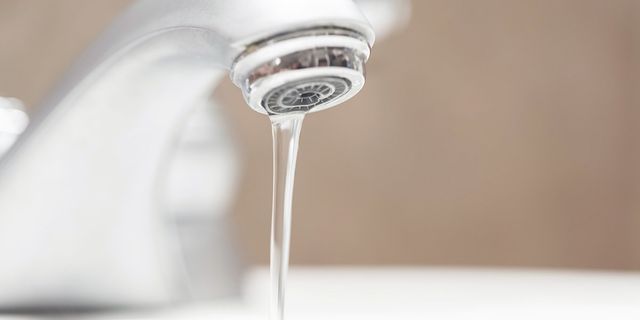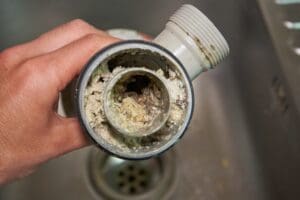Highly-Rated Ways for Rectifying Low Water Pressure in Your Home
Highly-Rated Ways for Rectifying Low Water Pressure in Your Home
Blog Article
The article following next involving 4 Ways to Troubleshoot Low Water Pressure is exceedingly enjoyable. Read it for yourself and figure out what you think of it.

Low water stress in your home can be a discouraging trouble, affecting everything from bathing to cleaning dishes. If you're experiencing weak water flow, there are several feasible causes and remedies to discover. In this overview, we'll review common factors for low tide pressure and practical steps to resolve the concern effectively.
Introduction to Low Tide Pressure
Low water pressure takes place when the flow of water from your faucets, showers, and other fixtures is weaker than typical. This can make daily jobs more challenging and much less efficient. Understanding the causes of low tide stress is vital to locating the ideal remedy.
Common Reasons For Low Water Stress
Pipeline Obstructions
With time, pipelines can come to be blocked with mineral deposits, sediment, or particles, restricting the circulation of water. This is an usual problem in older homes with galvanized steel pipelines.
Rust
Corrosion within pipelines can result in leakages and lowered water stress. Corrosion buildup can constrict water circulation, particularly in maturing plumbing systems.
Faulty Pressure Regulators
Pressure regulatory authorities are responsible for maintaining constant water stress in your home. If they malfunction, it can cause low water pressure or uneven flow throughout your house.
Community Water Supply Issues
Often, the trouble exists outside your home. Metropolitan water supply problems, such as main line leaks or upkeep job, can briefly minimize water pressure in your area.
How to Detect Low Tide Pressure
Inspecting Faucets and Components
Begin by evaluating the water stress at different taps and components throughout your home. If the issue is isolated to particular areas, it might indicate localized problems.
Examining Pipelines
Check noticeable pipes for indicators of leaks, rust, or obstructions. Focus on any type of unusual noises, such as banging or rattling pipelines, which might suggest problems within the plumbing system.
Consulting with a Plumber
If you're incapable to determine the reason for low tide stress, take into consideration employing a specialist plumber to conduct a thorough examination. They can identify underlying problems and recommend proper remedies.
DIY Solutions to Repair Low Tide Pressure
Cleaning Up Aerators and Showerheads
Natural resources can build up in aerators and showerheads, minimizing water circulation. Get rid of and clean these parts frequently to improve water stress.
Flushing Hot Water Heater
Debris accumulation in the hot water heater can restrict circulation and minimize efficiency. Purging the storage tank periodically aids get rid of debris and maintain optimal efficiency.
Checking Stress Regulator
Make certain that the stress regulator is working appropriately. Adjusting or changing the regulatory authority can help restore appropriate water pressure throughout your home.
Clearing Up Clogs in Pipes
For small clogs, try making use of a plumbing serpent or chemical drainpipe cleaner to clear obstructions in pipelines. Be cautious when making use of chemicals and adhere to security guidelines.
When to Call a Professional Plumber
If do it yourself initiatives fail to solve the problem or if you suspect significant plumbing issues, it's best to seek help from an accredited plumber. They have the knowledge and tools to address complex issues safely and successfully.
Safety Nets to Maintain Water Stress
Regular Maintenance
Set up routine upkeep for your plumbing system to stop problems such as corrosion, leakages, and clogs. Attending to small issues early can help stay clear of more considerable fixings later on.
Mounting a Pressure Booster
Think about installing a pressure booster pump to boost water stress in areas with regularly reduced flow. This can be specifically valuable for multi-story homes or buildings with high-demand fixtures.
Surveillance Water Use
Bear in mind water use routines and avoid overtaxing the plumbing system. Basic modifications, such as shocking showers and laundry loads, can aid preserve appropriate water pressure.
Verdict
Dealing with low tide stress can be discouraging, but identifying the underlying causes and implementing ideal services can restore optimal flow throughout your home. Whether it's cleansing aerators, evaluating pipes, or consulting with a plumber, taking positive steps can make sure a steady supply of water for your everyday needs.
How to Fix Low Water Pressure In Your Home
Municipal Water Supply Issues
Scheduled maintenance, high demand, and water main breaks are all potential causes for low water pressure within a city or county’s water lines. While there’s not much you can do to personally fix a problem with your city or county’s water supply system, you can play a big role in documenting the issue and alerting those who can.
How to fix it:
Ask your neighbors if they are experiencing any issues with low water pressure. If multiple homes are affected, it’s likely related to the city’s water line.
Contact the local Water Authority to see if there is any maintenance taking place that might be affecting your supply. Also let them know of your specific issues. If other homeowners report the same issues, they’ll know that there could be a larger issue to look into.
Faulty Fixtures
A damaged or clogged shower head, faucet or appliance is the first thing we’d suggest checking, especially if low water pressure appears to be isolated to a specific area of your home.
How to fix it:
First, turn off the main water supply to your home.
Check the affected appliances for build-up or debris. In the case of a faucet, you can simply unscrew the aerator at the tip of the faucet. Showerheads should be fully detached from the water pipe.
While the appliances are detached, you may want to check the water supply to determine if the fixtures were in fact the issue.
To clean, soak the showerhead or aerator in vinegar and brush off any visible debris.
Reattach the fixtures and check the water pressure again. If it is still low, there is likely a deeper issue at hand, which can be determined by a professional plumber.
Pipe Obstructions
Mineral deposits, rust or other debris within water pipes can lead to blockages or corrosion over time.
How to fix it:
When you think of a clog, you probably think of a drain clog. While there are many DIY solutions to clearing a drain, clogs in a water pipe will almost always require the help of a professional plumber. A plumber will be able to locate the affected pipe and clean out any debris or mineral deposit buildup. In severe cases, the pipe may need to be replaced. Your plumber might also recommend a water softening system to remove the minerals from your home’s water supply that can contribute to pipe blockages over time.
Plumbing Leak
Undetected water line leaks can divert water away from your residential pipes, reducing the water pressure in your fixtures.
How to fix it:
Check your water meter by turning off all water sources and monitoring the meter for any movement, which could be a clear indicator of a potential leak.
Check all visible pipes for signs of leaking, including water stains, active dripping or damp spots around the pipe.
Inspect fixtures, including faucets and showerheads, for any drips.
Test the pressure but recording the pressure with the main water valve shut off. Leave off for a few hours and test again. A significant drop in pressure is a clear sign of a leak.
https://kiddcoplumbing.com/plumbing-blog/how-to-fix-low-water-pressure/

How to Fix Low Water Pressure In Your Home
Municipal Water Supply Issues
Scheduled maintenance, high demand, and water main breaks are all potential causes for low water pressure within a city or county’s water lines. While there’s not much you can do to personally fix a problem with your city or county’s water supply system, you can play a big role in documenting the issue and alerting those who can.
How to fix it:
Faulty Fixtures
A damaged or clogged shower head, faucet or appliance is the first thing we’d suggest checking, especially if low water pressure appears to be isolated to a specific area of your home.
How to fix it:
Pipe Obstructions
Mineral deposits, rust or other debris within water pipes can lead to blockages or corrosion over time.
How to fix it:
When you think of a clog, you probably think of a drain clog. While there are many DIY solutions to clearing a drain, clogs in a water pipe will almost always require the help of a professional plumber. A plumber will be able to locate the affected pipe and clean out any debris or mineral deposit buildup. In severe cases, the pipe may need to be replaced. Your plumber might also recommend a water softening system to remove the minerals from your home’s water supply that can contribute to pipe blockages over time.
Plumbing Leak
Undetected water line leaks can divert water away from your residential pipes, reducing the water pressure in your fixtures.
How to fix it:
https://kiddcoplumbing.com/plumbing-blog/how-to-fix-low-water-pressure/
As a passionate person who reads on Low Water Pressure in the House?, I imagined sharing that section was smart. You should take the time to promote this page if you appreciated it. Thanks a lot for your time spent reading it.
Website Report this page